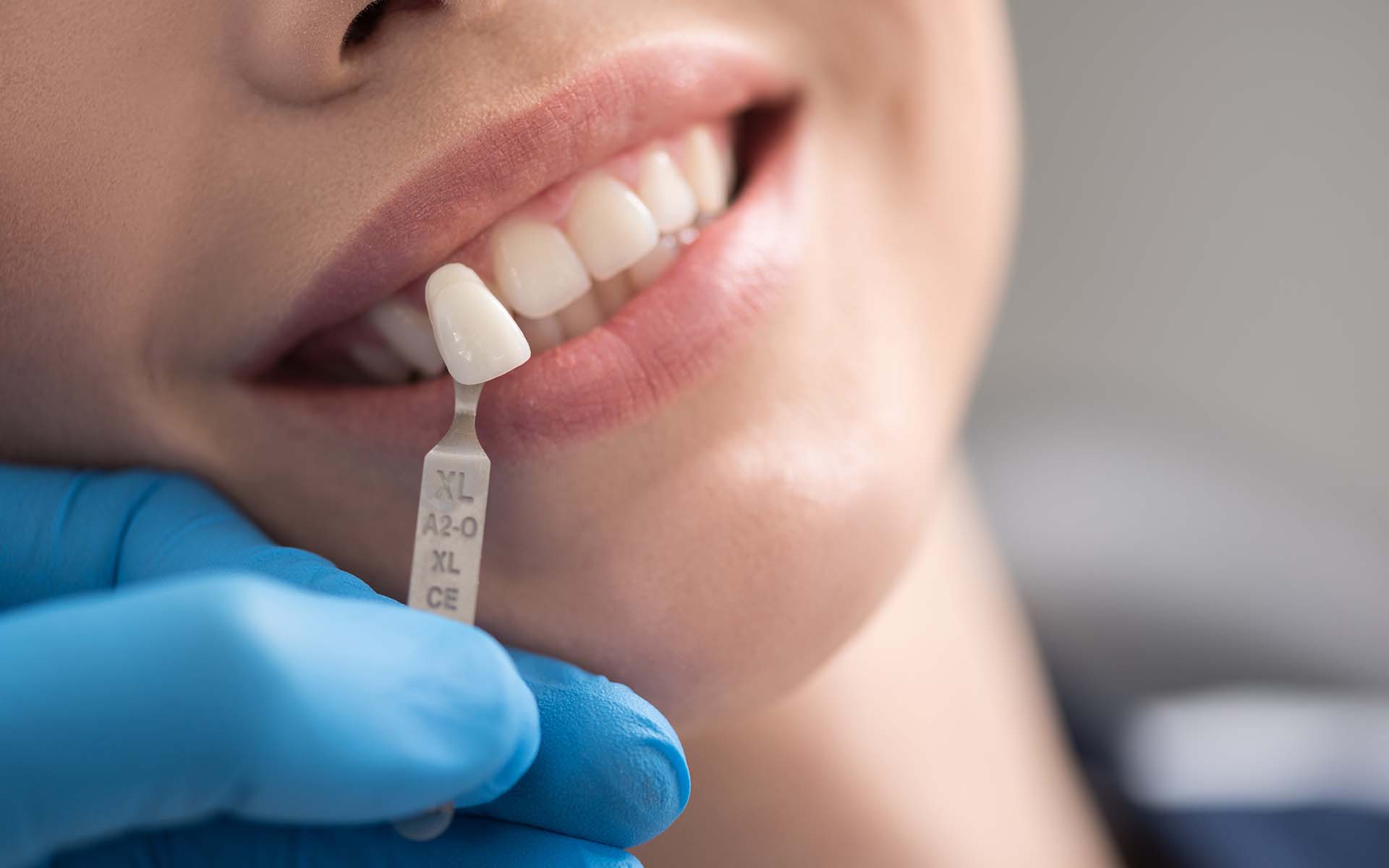
Lamina Dental Treatment

Laminate, also known as leaf porcelain or zirconium, is a coating method applied by removing 0.3 mm to 0.7 mm of the surface from the tooth and sticking it on it. Porcelain laminate veneer coating, which can be easily prepared according to the structure and color of the teeth and which causes minimal damage to the teeth due to its thinness, does not contain metal or toxic substances. It is resistant to breakage. It is very easy to match the color with the teeth, as it allows the light to pass through the teeth. It is generally preferred to be used in anterior teeth. Leaf veneer can be used for the treatment of genetically transmitted and non-whitenable discolorations, tooth gaps, yellowing of fillings, treatment of broken and cracked teeth, and correction of tooth distortions in patients who do not accept orthodontic treatment.
How is Laminate Veneer can apply?
This treatment is applied after your dentist makes the necessary checks and decides that you are suitable for treatment. If the tooth does not have enough enamel, if there is a problem of clenching and grinding, if the lower jaw in the mouth is anterior, if the jaw is closed backwards, laminate veneer treatment is not applied. If you have any of these problems, your dentist will first initiate a treatment process to eliminate these problems.
If the patient does not have any obstacles for treatment, the ways to be followed in laminate veneer are as follows;
- Local anesthesia can be applied by your dentist in order to veneer your teeth in the most comfortable, painless and controlled way.
- The tooth surfaces to be coated are thinned by filing in proportion to the coating thickness. The purpose of filing is to ensure that the leaf porcelain is properly seated on the tooth surface and to obtain an aesthetic appearance without creating any protrusions.
- Measures are taken from the filed tooth to make leaf porcelain. Processing and rehearsal of leaf porcelain takes about a week.
- Your dentist can make a temporary filling between the start and end dates of the treatment, if necessary.
- Leaf porcelain, that is, laminate veneer veneers, prepared in accordance with your teeth, are placed on the filed tooth.
- All this measurement and treatment process for leaf coating is completed within 7-10 days.
- The average life of leaf porcelain is 15 years, but if you do your oral and dental care correctly and see your dentist regularly, you can use them for up to 20 years.
What are the Advantages of Laminate Veneer?
This application has significant advantages, especially when compared to porcelain veneer. In porcelain veneer, tooth filing is required between 1.5 mm and 2 mm, this process often causes hot-cold sensitivity in the teeth. In the porcelain laminate process, only a rasping of 0.3 to 0.7 mm will be sufficient. Porcelain leaf veneer is generally preferred in cases where the filling is insufficient to provide an aesthetic appearance in the teeth. Moreover;
- Minimal damage to tooth enamel because a very fine surface is abraded.
- Capturing the natural tooth color is easier in this method, because the leaf porcelain has the ability to capture the tooth color by transmitting light.
- Processing time is short. Your treatment usually takes between 7 and 10 days.
- It is highly durable, has high resistance to liquid absorption and is resistant to abrasion, that is, to abrasion due to external factors.
What should be known in laminate veneer treatment is that it is a more detailed and laborious process than porcelain veneer. The construction phase and bonding processes require a finer workmanship. Therefore, its cost is higher than porcelain veneer.